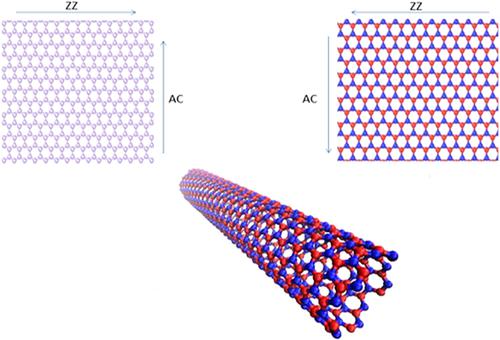当前位置:
X-MOL 学术
›
WIREs Comput. Mol. Sci.
›
论文详情
Our official English website, www.x-mol.net, welcomes your feedback! (Note: you will need to create a separate account there.)
Atomistic modeling of graphene/hexagonal boron nitride polymer nanocomposites: a review
Wiley Interdisciplinary Reviews: Computational Molecular Science ( IF 11.4 ) Pub Date : 2017-11-13 , DOI: 10.1002/wcms.1346 Akarsh Verma 1 , Avinash Parashar 1 , M. Packirisamy 2
Wiley Interdisciplinary Reviews: Computational Molecular Science ( IF 11.4 ) Pub Date : 2017-11-13 , DOI: 10.1002/wcms.1346 Akarsh Verma 1 , Avinash Parashar 1 , M. Packirisamy 2
Affiliation

|
Due to their exceptional properties, graphene and hexagonal boron nitride (h‐BN) nanofillers are emerging as potential candidates for reinforcing the polymer‐based nanocomposites. Graphene and h‐BN have comparable mechanical and thermal properties, whereas due to high band gap in h‐BN (~5 eV), have contrasting electrical conductivities. Atomistic modeling techniques are viable alternatives to the costly and time‐consuming experimental techniques, and are accurate enough to predict the mechanical properties, fracture toughness, and thermal conductivities of graphene and h‐BN‐based nanocomposites. Success of any atomistic model entirely depends on the type of interatomic potential used in simulations. This review article encompasses different types of interatomic potentials that can be used for the modeling of graphene, h‐BN, and corresponding nanocomposites, and further elaborates on developments and challenges associated with the classical mechanics‐based approach along with synergic effects of these nano reinforcements on host polymer matrix.
中文翻译:

石墨烯/六方氮化硼聚合物纳米复合材料的原子建模:综述
由于其卓越的性能,石墨烯和六方氮化硼(h-BN)纳米填料正在成为增强基于聚合物的纳米复合材料的潜在候选材料。石墨烯和h-BN具有可比的机械和热性能,而由于h-BN中的带隙较高(〜5 eV),因此具有相反的电导率。原子建模技术是昂贵且费时的实验技术的可行替代方案,并且足够精确,可以预测石墨烯和基于hBN的纳米复合材料的机械性能,断裂韧性和热导率。任何原子模型的成功都完全取决于模拟中使用的原子间势的类型。这篇评论文章涵盖了可用于石墨烯,h-BN,
更新日期:2017-11-13
中文翻译:

石墨烯/六方氮化硼聚合物纳米复合材料的原子建模:综述
由于其卓越的性能,石墨烯和六方氮化硼(h-BN)纳米填料正在成为增强基于聚合物的纳米复合材料的潜在候选材料。石墨烯和h-BN具有可比的机械和热性能,而由于h-BN中的带隙较高(〜5 eV),因此具有相反的电导率。原子建模技术是昂贵且费时的实验技术的可行替代方案,并且足够精确,可以预测石墨烯和基于hBN的纳米复合材料的机械性能,断裂韧性和热导率。任何原子模型的成功都完全取决于模拟中使用的原子间势的类型。这篇评论文章涵盖了可用于石墨烯,h-BN,


























 京公网安备 11010802027423号
京公网安备 11010802027423号